There are two major viruses you can catch at the gym that can decimate your training. One is using equipment and benches after a sicko has shared his germs rather than staying home. The other is watching someone else's poor form on
an exercise and duplicating it yourself.
Like a nasty bug, bad form spreads from one trainee to another. No amount of zinc or vitamin C can help this, but some tough love definitely can. With an assist from 2015 IFBB North American Championships men's physique winner and Dymatize athlete Brandan Fokken, here are the triceps mistakes you're completely unaware you're making.
1. Going Too Narrow On Close-Grip Benches
This multijoint exercise might be part of your triceps routine, but did you ever give thought to the optimal grip width? I've seen a number of lifters butt their hands against each other as if this would optimize muscle recruitment. Sorry, but close-grip benches aren't just diamond push-ups under a barbell.
While triceps activation increases once you move your hands in from a regular bench press, no research indicates that it keeps increasing even further as your hands come very close together. What can increase, however, is the strain on your wrists and elbows.
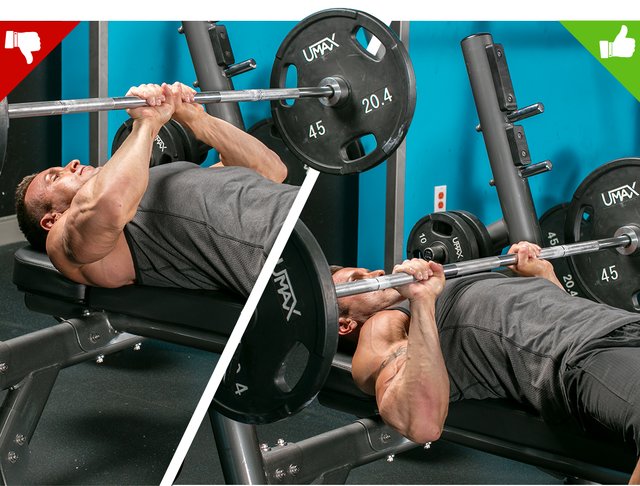
"When I bring my grip in fairly close on the bench press, the movement becomes awkward; I spend most of my energy making sure the bar doesn’t tilt to one side or the other," says Fokken. "That puts far too much pressure in my shoulders and reduces it on my triceps, which is counterproductive."
The solution: Try a grip from 10-14 inches apart, or just inside shoulder width. From there, experiment slightly with hand positions to determine what feels right for you.
2. Letting Your Elbows Drift During Kick-Backs
This is a common form error even among experienced lifters. Here's what it looks like: From the arm-extended position with your elbow by your side, you allow your elbow to drop along with the forearm as you lower the weight. As you kick your hand backward, you simultaneously raise your elbow back up. This little dance turns a classic single-joint move emphasizing the lateral triceps into one that also recruits the delts.
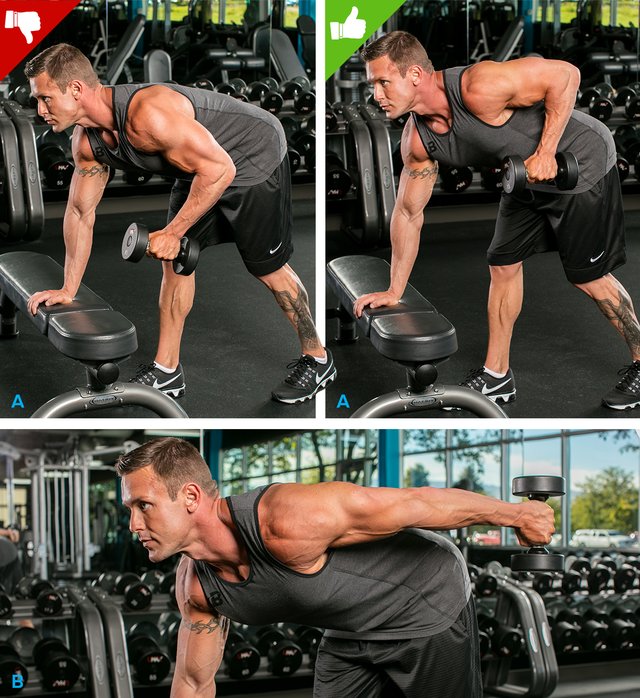
The solution: To get this isolation movement right, lock your elbow by your side so that your upper arm is parallel with the floor—and keep it there. With the dumbbell hanging at 90 degrees and your elbow serving as a hinge, contract your triceps to fully straighten your arm. As you lower the weight, don't allow your elbow to drop.
"I pay close attention to where my arm—especially the elbow—is relative to my body and really focus on contracting just the triceps," says Fokken. "Do these close to a mirror to watch the movement; start with a lighter weight to get the form down. I think people tend to go a bit too heavy in the beginning, and their form suffers because of it."
3. Locking Out Your Elbows On Machine Dips
Triceps movements can be tricky when it comes to range of motion. You can hold a dumbbell during a kick-back or a rope handle during a push-down in the full-lockout, peak-contracted position, and get fantastic triceps work. But on movements like machine dips, do the exact opposite of what you want. When locked out in a machine dip, you're using your bones for support, muscular tension is heavily reduced, and the joint is under considerable pressure.
Sure, some people's elbows won't bark under this strain. But if you've got bad elbows, avoid aggravating them by using lockouts.
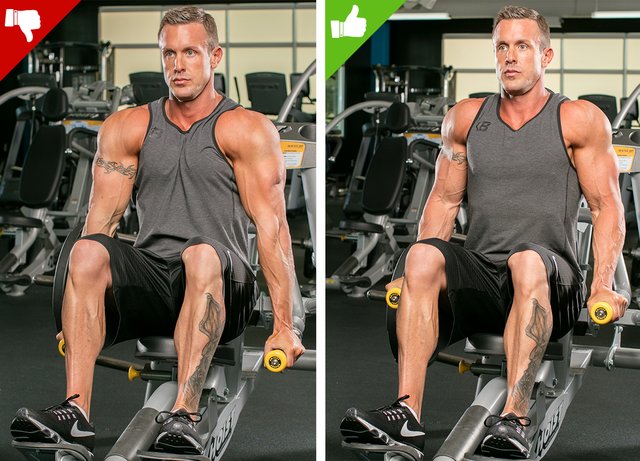
"At the joint, you're getting maximum surface contact between the two adjoining surfaces, which is especially unwise if you're using relatively heavy loads," says Guillermo Escalante, DSc, ATC, CSCS, owner of SportsPros Physical Therapy Center in Claremont, California. "That also reduces time under tension, meaning the muscles are doing less work—and setting you up for less gains."
The solution: So what's the point of diminishing returns? Escalante warns those last 10 degrees of extension have maximum surface tension, meaning two bones are maximally touching each other. He recommends stopping the movement just short of or right at that 10-degree point.
4. Allowing Your Elbows To Flare During Overhead Extensions
Single-joint exercises for the triceps all have one thing in common: elbow extension. The elbows go from a highly bent position (stretch) to fully straightened (contracted). Simple enough, right? But if your elbows are stationary in a flared-out position in a movement like an overhead extension, you can still lose the movement's isolation and limit its effectiveness by once again turning a single-joint movement in a multijoint one.
Flaring your elbows allows your delts and pecs to assist, which reduces the focus on the triceps. To decrease the amount of stress on your pecs and shoulders, keep your elbows tucked.
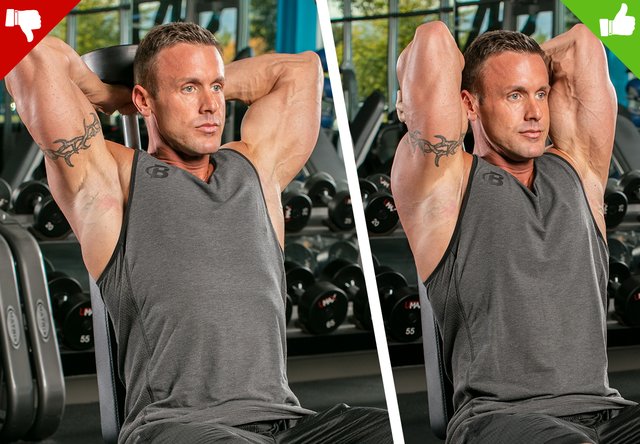
The solution: The bad news is that it's hard to keep your elbows tucked in on overhead extensions, especially those done with a single dumbbell. Your elbows will naturally want to flare out, and it's up to you to resist the urge.
Using an EZ-bar and taking a slightly wider grip often makes this challenge somewhat more manageable, but you'll still want to be conscious and wary of elbow flare.
5. Allowing Movement In Your Upper Arms When Doing Skullcrushers
Elbow flare isn't the only way in which a single-joint triceps exercise can lose its isolation effect. Skullcrushers (aka lying French presses or lying triceps extensions) are intended to have movement in only one set of joints. But in the name of looking tough and moving big weights—seriously, you do know what this exercise is called, right?—lifters often allow their upper arms to drift away from vertical.
On the eccentric motion, as the bar approaches your forehead, your upper arms will want to angle backward, ranging from a slight drift to something close to the eccentric of a dumbbell pull-over. Your shoulders, chest, and even lats can get in on the action at that point, and all of their involvement signals stimulation being taken off the triceps.
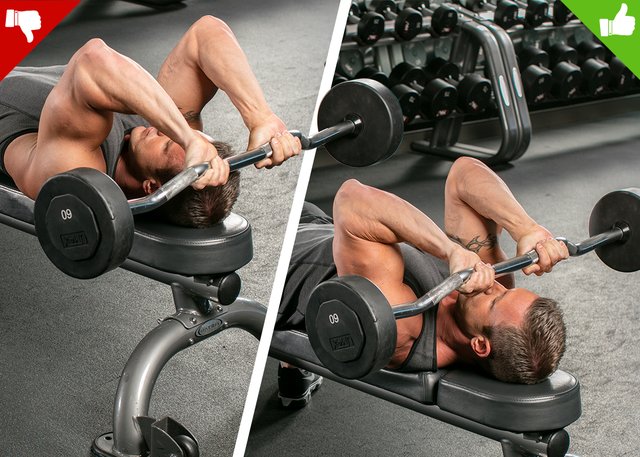
With skulls, it's sometimes difficult to realize you're guilty of this form faux pas, so it might take a watchful spotter or trainer's eye to tip you off. In fact, it's often helpful if that person physically holds your upper arms in place as you complete a few reps, so you can develop a feel for how it's done correctly.
The solution: The bottom line here is to keep single-joint movements restricted to just one joint for better triceps stimulation. If that means going lighter, so be it.
6. Letting Your Elbows Move Forward During Push-Downs
You may think push-downs are a movement basic enough to sleepwalk through and still get a pump. But plenty of trainees get this staple triceps move wrong by not paying as much attention to the eccentric as the concentric.
I'm not just talking about keeping the negative under control in speed, either. As you near the end of the range of motion, you can still allow the weight to keep pulling your hands forward and up, pulling your elbows away from their place by your sides. Once again, you see movement in the shoulder joint, turning a single-joint movement into a multijoint one. All that extra work you have to do on each rep to reposition your elbows back by your sides for each rep is a wasted motion.
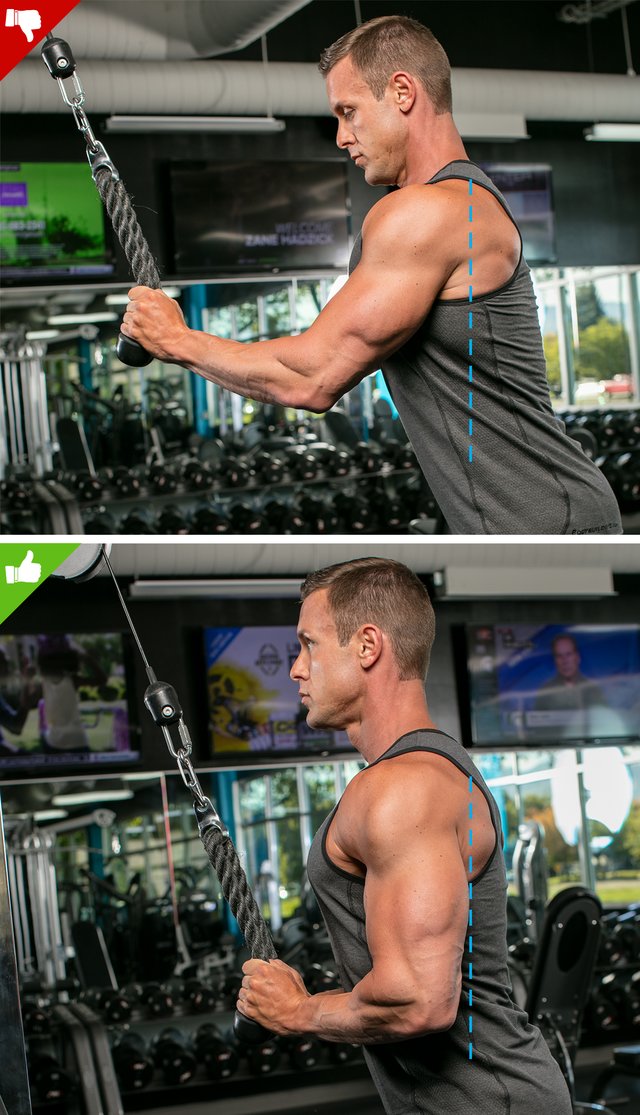
"This is an exercise I commonly see done wrong," says Fokken. "As with kick-backs, the elbows are moving forward and back on each rep, making this a multijoint movement and bringing the shoulders into the equation."
The solution: If it's impossible for you to keep from doing this, it means you're going too heavy on, of all things, push-downs. Instead, keep the movement strict by maintaining your elbow position for the entire set, reversing the motion on the eccentric phase before your elbows begin to pull forward.
Maintain this focus on the negative rep as well as the positive, and you'll get a better pump no matter how much of the stack you're using.







0 comments:
Post a Comment